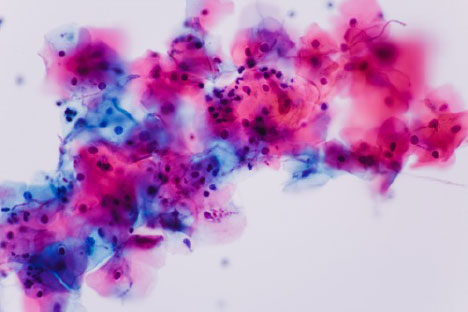Latest Posts
April 25, 2022
Bacteria are ubiquitous in the environment, and a subset of them are pathogenic to humans, potentially causing serious and even fatal infections.1 Bacterial infections are associated with a high public health burden, and their treatment poses serious challenges. Researchers continue to discover new pathogenic bacterial species and variants, such as the causative pathogens of Legionnaire’s disease and Lyme disease, which were identified in the 1970s.1 Moreover, the number of immunosuppressed individuals, who are especially vulnerable to opportunistic infections, is increasing in communities, in part due to the use of immunosuppressive medications and the acquired immunodeficiency syndrome (AIDS).1 However, scientists have […]
April 18, 2022
Recalcitrant onychomycosis is a fungal nail infection that is prone to relapse. Traditional treatment using potassium hydroxide and culture diagnosis is costly and time-consuming. However, qualitative polymerase chain reaction (qPCR) and next-generation sequencing (NGS) molecular identification methods are extremely specific, quantitative and sensitive, offering superior detection of fungal diversity in fingernail or toenail infections. These methods allow for faster turnaround (up to 3 days) and offer more accuracy in customized treatment of a patient’s cutaneous infection, which can result in better diagnosis and treatment. Currently, generalized treatment for recalcitrant onychomycosis targets Trichophyton rubrum (T. Rubrum); however, these treatments overlook the […]
April 14, 2022
Given that post-operative urinary tract infections can be common after urologic stone surgery, prophylactic antibiotics are typically given to patients before their ureteroscopic lithotripsy (URSL) procedure to break up urologic stones as a standard of care. The administration of antimicrobial prophylaxis is primarily based on prior urinalysis or urine culture results in accordance with the AUA/Endourology Society Guideline for Surgical Management of Kidney Stones. Additionally, several studies show the effectiveness of prophylactic treatment. In a study published in the BJUI, pre-operative prophylactic antibiotics were shown to be successful in reducing bacteriuria, therefore reducing the risk of post-operative infections at the […]
March 28, 2022
Women experience unique health challenges. The higher hospitalization rates among women reflect this. The Centers for Disease Control and Prevention (CDC) reported that in 2018, more women experienced two or more hospital stays within 12 months as compared to men.1 According to the NICHD, women-specific health conditions can be broadly categorized into the following:2 Gynecological health and disorders Pregnancy issues Disorders related to infertility Others (e.g., Turner syndrome, Rhett syndrome, ovarian and cervical cancers) Issues related to women’s overall health and wellness (e.g., osteoporosis, menopause, bone health) Gynecological health, the branch of medicine that focuses on female reproductive health, is […]
March 24, 2022
Fungal infections and diseases, when compared to viral or bacterial infections, have always been considered less common, and mostly nonlife-threatening (except to immunocompromised patients or those with comorbidities), and have been unfortunately ignored. However, according to the Journal of Bacteriology & Mycology, this notion has changed in recent years for several reasons. First, the number of immunocompromised individuals has increased globally, largely due to cancer, diabetes, HIV/AIDS, and patients who’ve received organ transplants. Second, major changes in healthcare practices over the past decade and advancements of medical care have prompted the emergence of drug-resistant fungi, especially in the healthcare setting. […]




